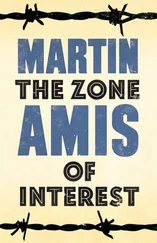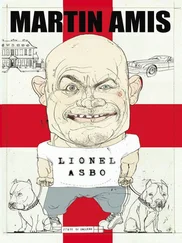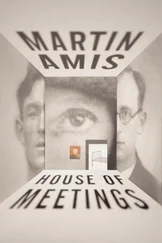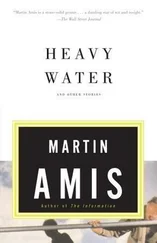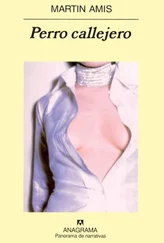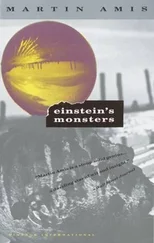Throughout this period the Russian people heard nothing from their leaders but a drone of self-congratulation. And the truth, no longer postponable by the standard Bolshevik means (violence), screamed with laughter at what it saw. Napoleon said that power is never ridiculous (and despotic power is presumably doubly unsmiling); but Bolshevism, by this stage, was ridiculous. Glasnost , which was a euphemism for not lying, laughed the Bolsheviks off the stage. The poets had talked about the inhuman power of the lie – but there is an antithesis to that: the human power of the truth. Lying could no longer be enforced, and the regime fell. And the leaders had become too evolved, and were incapable of the necessary cruelty – the cruelty of Lenin and Stalin, which was not medieval so much as ancient in its severity.
In Lenin’s Tomb David Remnick addresses himself to the squalid comedy of the Bolshevik disintegration:
The exhibition of Economic Achievements, a kind of vast Stalinist Epcot Centre near the Moscow television tower, had for years put on displays of Soviet triumphs in the sciences, engineering, and space in huge neo-Hellenic halls. Vera Mukhina’s gigantic statue Worker and the Collective Farm Girl (jutting breasts and biceps, bulging eyes) presided at the entrance, providing citizens with a sense that they were now part of a socially and genetically engineered breed of muscular proletarians. But with glasnost, the directors grew humble and put up an astonishingly frank display, ‘The Exhibit of Poor-Quality Goods.’
At the exhibit, a long line of Soviets solemnly shuffled past a dazzling display of stunning underachievement: putrid lettuce, ruptured shoes, rusted samovars, chipped stew pots, unravelled shuttlecocks, crushed cans of fish, and, the show-stopper, a bottle of mineral water with a tiny dead mouse floating inside. All the items had been purchased in neighbourhood stores.
There is also something horribly comic in Remnick’s remark that the ‘leading cause of house fires in the Soviet Union was television sets that exploded spontaneously’. But the facts are of course intense. As the economist Anatoly Deryabin wrote in the official journal Molodoi Kommunist : ‘Only 2.3 per cent of all Soviet families can be called wealthy, and about 0.7 of these have earned that income lawfully… About 11.2 per cent can be called middle-class or well-to-do. The rest, 86.5 per cent, are simply poor.’ Towards the end of this chapter (‘Poor Folk’) Remnick visits a ghost village of the Collectivization in the Volgoda region, once a prosperous community, and now ‘little more than a few collapsed cabins, a graveyard, and wheel ruts in the mud’. An old woman told him: ‘The collective farms are a disaster. There’s nothing left. It’s all lost.’ And a neighbour adds:
We were all supposed to be one big family after collectivization. But everyone was pitted against everyone else, everyone suspicious of everyone else. Now look at us, a big stinking ruin. Now everyone lives for himself… What a laugh, what a big goddam laugh.
Back at the New Statesman , towards the end of 1975, V. S. Pritchett might have passed Oleg Kerensky on the stairs when he delivered his review of the second volume of The Gulag Archipelago . The laughter should have stopped around then. Why didn’t it?
The Collapse of the Value of Human Life in Practice – 1 [18] All this is taken from The Russian Revolution, 1917 in the always-fascinating ‘Uncovered Editions’ series. I have followed punctuation and house style. And I confront the reader with what follows not for its detail but for its overall effect.
Sir C. Eliot to Earl Curzon. – (Received 23 February.)
(Telegraphic.)
Vladivostok , 22 February 1919.
‘Following report of 71 Bolshevik victims [that is, victims of Bolsheviks] received from consular office at Ekaterinburg, dated 19th February:—
‘“Nos. 1 to 18 Ekaterinburg citizens (first three personally known to me) were imprisoned without any accusation being made against them, and at four in the morning of 29th June were taken (with another, making 19 altogether) to Ekaterinburg sewage dump, half mile from Ekaterinburg, and ordered to stand in line alongside of newly-dug ditch. Forty armed men in civil clothes, believed to be Communist militia, and giving impression of semi-intelligent people, opened fire, killing 18. The 19th, Mr Chistorserdow, miraculously escaped in general confusion. I, together with other consuls at Ekaterinburg, protested to Bolsheviks against brutality, to which Bolsheviks replied, advising us to mind our own business, stating that they had shot these people to avenge death
of their comrade, Malishev, killed at front, against Czechs.
‘“Nos. 19 and 20 are 2 of twelve labourers arrested for refusing to support Bolshevik Government, and on 12th July thrown alive into hole into which hot slag deposits from works at Verhisetski near Ekaterinburg. Bodies were identified by fellow labourers.
‘“Nos. 21 to 26 were taken as hostages and shot at Kamishlof on 20th July.
‘“Nos. 27 to 33, accused of plotting against Bolshevik Government, arrested 16th December at village of Troitsk, Perm Government. Taken 17th December to station Silva, Perm railway, and all decapitated by sword. Evidence shows that victims had their necks half cut through from behind, head of No. 29 only hanging on small piece of skin.
‘“Nos. 34 to 36, taken with 8 others beginning of July from camp, where they were undergoing trench-digging service for Bolsheviks to spot near Oufalay, about 80 versts from Ekaterinburg, and murdered by Red Guards with guns and bayonets.
‘“Nos. 37 to 58, held in prison in Irbit as hostages, and 26th July murdered by gunshot, those not killed outright being finished off by bayonet. These people were shot in small groups, and murder was conducted by sailors and carried out by Letts, all of whom were drunk. After murder, Bolsheviks continued to take ransom money from relatives of victims, from whom they concealed crime.
‘“No. 59 was shot at village Klevenkinski, Verhotury district, 6th August, being accused of agitation against Bolsheviks.
‘“No. 60, after being forced to dig his own grave, was shot by Bolsheviks at village Mercoushinski, Verhotury district, 13th July.
‘“No. 61 murdered middle of July at Kamenski works for allowing church bells to be sounded contrary to Bolshevik orders, body afterwards found with others in hole with half head cut off.
‘“No. 62 arrested without accusation, 8th July, at village Ooetski, Kamishlov district. Body afterwards found covered with straw and dung, beard torn from face with flesh, palms of hands cut out, and skin incised on forehead.
‘“No. 63 was killed after much torture (details not given), 27th July, at station Anthracite.
‘“No. 67 murdered, 13th August, near village of Mironoffski.
‘“No. 68 shot by Bolsheviks before his church at village of Korouffski, Kamishlov district, before eyes of villagers, his daughters and son, date not stated.
‘“Nos. 69 to 71, killed at Kaslingski works near Kishtin, 4th June, together with 27 other civilians. No. 70 had head smashed in, exposing brains. No. 71 had head smashed in, arms and legs broken, and two bayonet wounds.
‘“Dates in this telegram are 1918.’”
Sir C. Eliot to Earl Curzon. – (Received 25 February.)
(Telegraphic.)
Vladivostok , 24 February 1919.
‘My telegram of 22nd February.
‘Following from consul at Ekaterinburg:
‘“Nos. 72 to 103 examined, 32 civilians incarcerated and taken away by Bolsheviks with 19 others at various dates between 9th July, 7th August, 27th July, all 51 having been declared outlaws. Official medical examination of 52 bodies (of which 32 examined, Nos. 72 to 103 not identified), found in several holes; 3 from Kamishlof revealed that all had been killed by bayonet, sword, and bullet wounds. Following cases being typical: No. 76 had 20 light bayonet wounds in back; No. 78 had 15 bayonet wounds in back, 3 in chest; No. 80, bayonet wounds in back, broken jaw and skull; No. 84, face smashed and wrist hacked; No. 89 had 2 fingers cut off and bayonet wounds; No. 90, both hands cut off at wrist, upper jaw hacked, mouth slit both sides, bayonet wound shoulder;
Читать дальше

